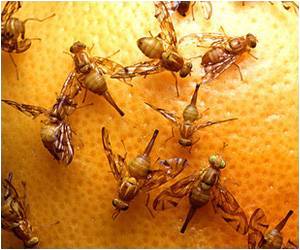Two common tumor suppressor genes, TSC and PTEN, are vital to regulating the stem cell-like precursor cells that create the blood supply in Drosophila, the common fruit fly.

"We wondered how an organism knows how many blood cells to make and when to make them in the context of injury and repair to tissue. In particular, we wondered how the blood progenitor cells sense that change and know when it's time to make more blood cells," Martinez-Agosto said. "We found that the TOR pathway uses these two genes to regulate its function and, when activated, it expands or increases the number of blood progenitor cells in the fly's blood."
The study appears Sept. 5, 2012 in the advance online issue of the peer-reviewed journal Development.
Michelle Dragojlovic-Munther, a graduate student in the Martinez-Agosto laboratory and first author of the study, found that cells with increased activity of TOR have a competitive advantage, allowing them to divide and make more of themselves so they can make blood. These progenitors, Dragojlovic-Munther found, also have high levels of reactive oxygen species (ROS) - ions or very small molecules that include free radicals – which are known to damage cells and can predispose humans to aging and heart disease. But in this case, the ROS proved valuable.
The precursors, Martinez-Agosto said, were producing ROS all the time and when TOR was activated, the levels increased dramatically. Too much ROS caused them to divide more than normal. If they treated the flies with antioxidants, which reduce ROS levels, the cells would develop normally.
The finding could be important because the TOR pathway is abnormally activated in many cancers, and it may be possible to target the levels of ROS, which may help regulate the pathway.
Advertisement
Going forward, Martinez-Agosto and his team will try to determine where the ROS is coming from and perhaps discover an enzyme that may be a good target for therapeutics. They know that the higher ROS levels in blood progenitors are not coming from mitochondria, the cell's power source, but have not identified how they are being produced.
Advertisement
Source-Eurekalert














